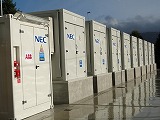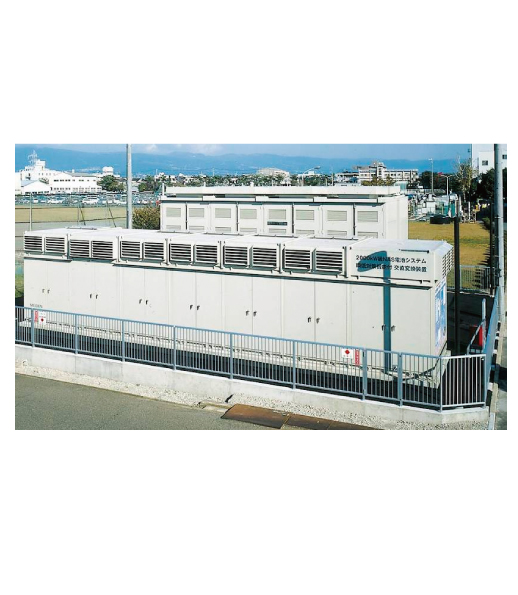
Power and EnergyAC-DC Converter Equipment for Energy Storage (Energy Storage System)
Drawing on our rich supply experiences and demonstrative research projects at home and abroad (total 200 units and aggregated capacity 330 MVA) , our energy storage system (AC-DC converter equipment for energy storage) has realized various needs of projects. We provide the optimal energy storage system by selecting the suitable battery from various kind of batteries according to usage applications and purposes.
Features
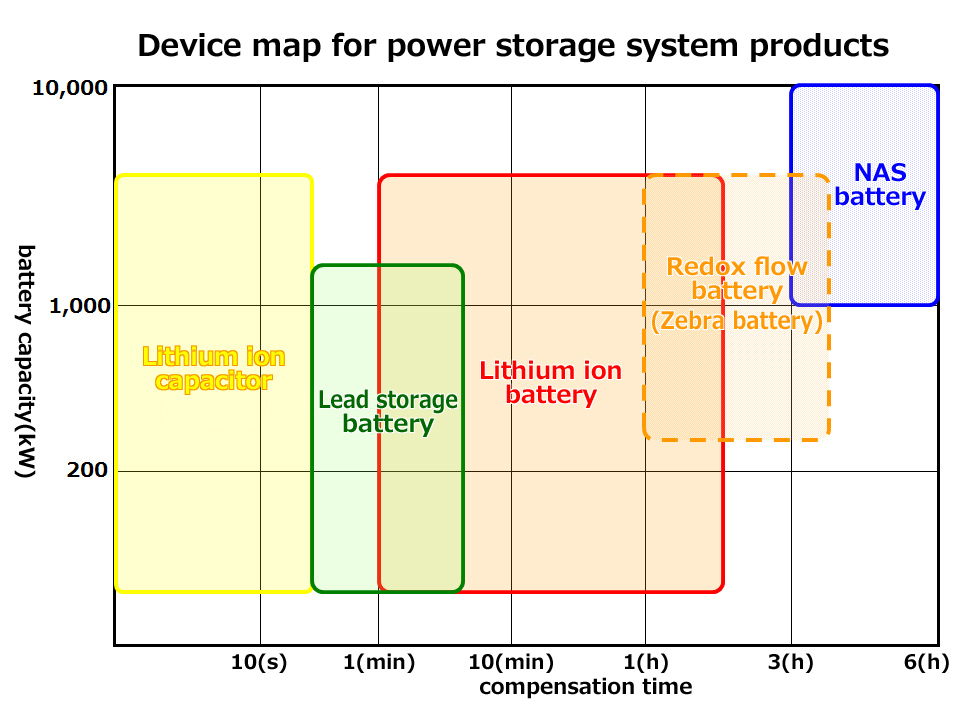
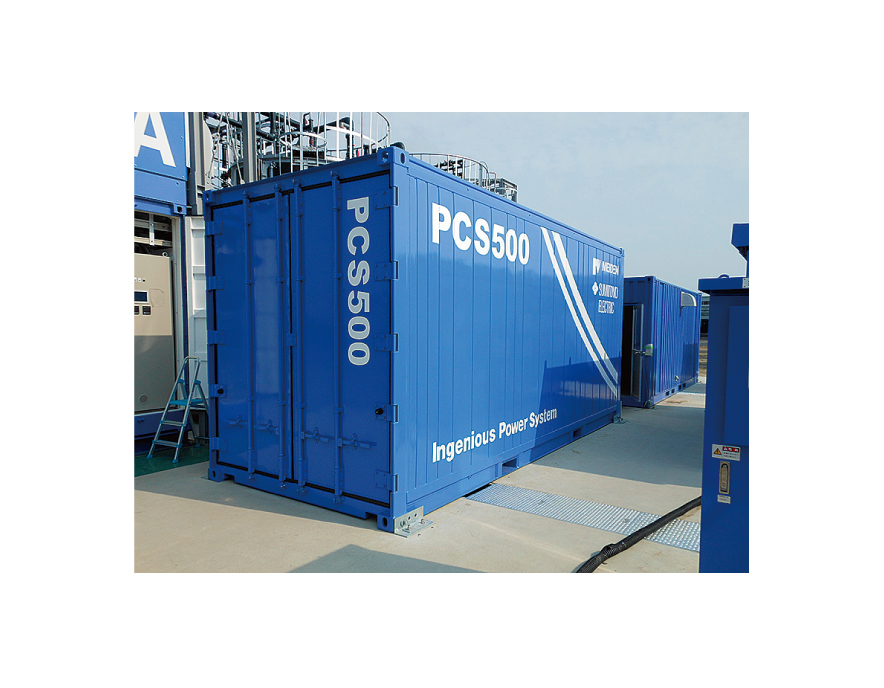
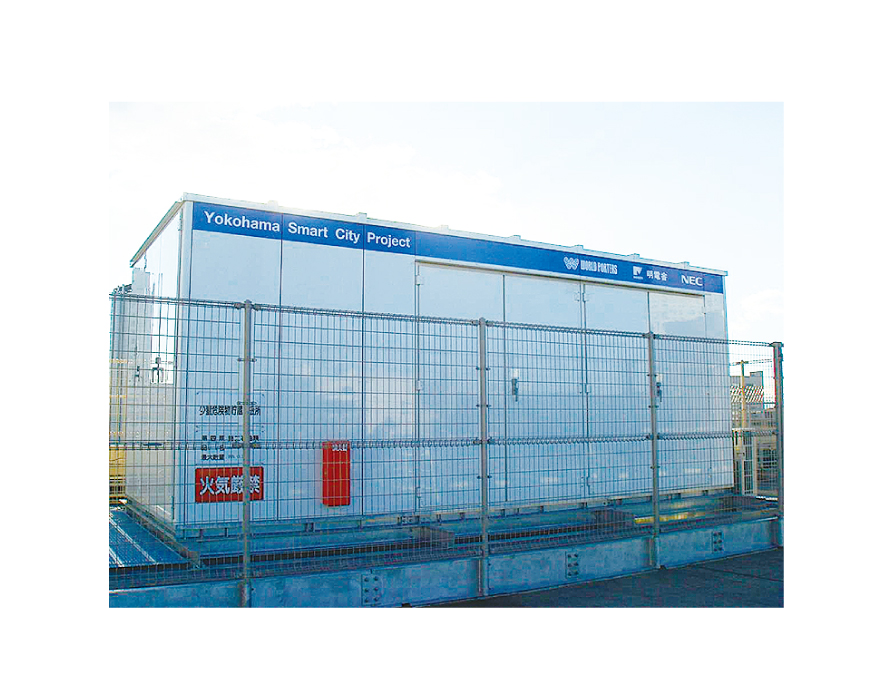
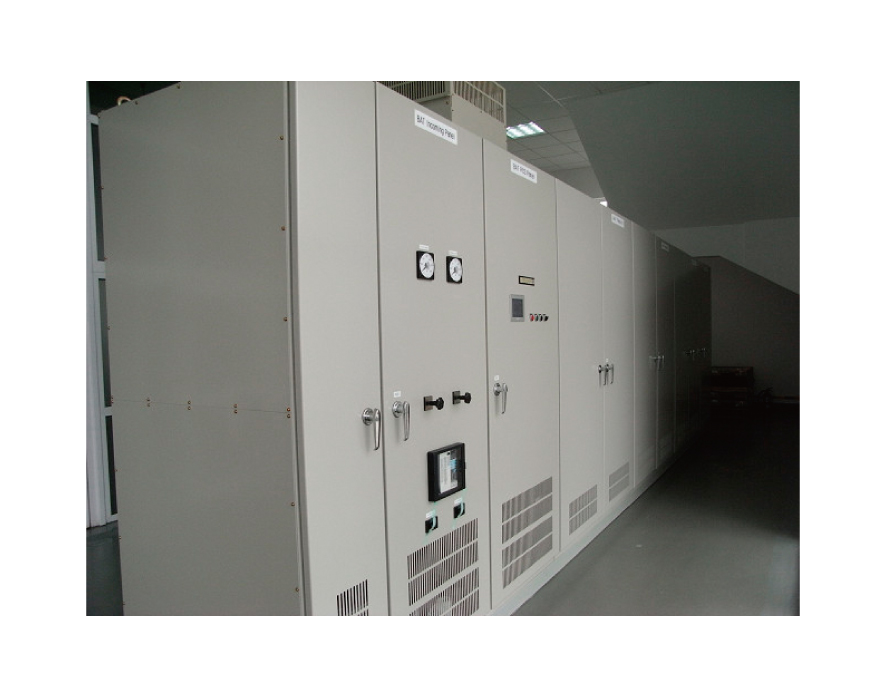
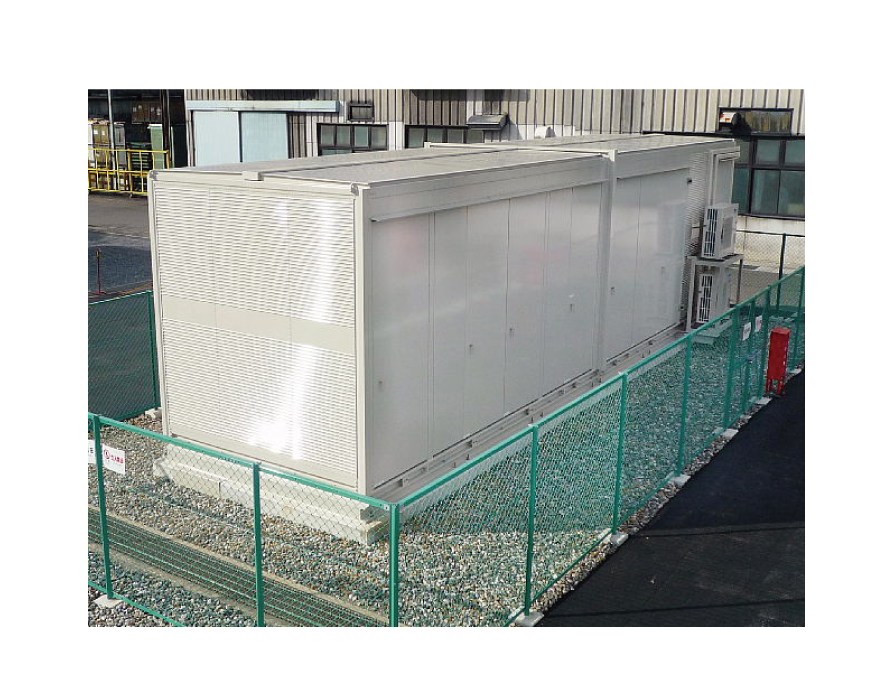
- Broad lineups with various system capacities from from 250 kVA to 4800kVA
- We will build the optimal systems in combination with various storage batteries in consideration of customer's requirements and characteristics of storage battery.
- We help our customers in enhancing business continuity including emergency power supply application and dynamic voltage compensation.
- We provide functions in support of various applications including power peak-shaving and grid stabilization.
- With No. 1 supply records in Japan, we provide high quality products and standardized design.
Types of storage battery for energy storage
We propose the optimal storage battery.
There are various storage batteries for energy storage, and each battery has distinct features.
Meiden proposes the optimal combination of right storage battery and AC-DC converter equipment to fit the purpose and application of the customer by drawing on our rich supply experiences.
Storage battery types and applications
- NAS battery (Note: NAS battery is a registered trademark or product name of NGK Insulators, Ltd. and Tokyo Electric Power Company, Incorporated.)
- Application: Load leveling/ peak shaving, grid independent operation function, instantaneous voltage drop countermeasure (UPS) function, system stabilization (adjustment of frequency), etc.
- Redox flow (RF) battery
- Application: Load leveling/ peak shaving, grid independent operation function, grid stabilization, etc.
- Lithium ion (LiB) battery
- Application: Grid stabilization, load fluctuation suppression (mitigation of electric power fluctuation), etc.
- Lead storage battery
- Application: Stand-alone operation function, instantaneous voltage drop countermeasure (UPS) function, etc.
- Lithium ion capacitor
- Application: dynamic voltage compensation (DVC) by UPS, grid stabilization, load fluctuation suppression, utilization of regenerative power, etc.
Applications of the energy storage system
- Load leveling/ peak shaving:
- Cheap night-time power will be charged to the energy storage system and will be discharged during the daytime as peak-shaving. It is possible to reduce the contract power demand and peform the peak-shaving during the daytime power peak period.
- Stand-alone operation function:
- The power is supplied from the energy storage battery to load. This function provides features in which startup in a short time (up to 2 seconds) is possible and no soot and smoke is discharged compared to the diesel or gas turbine emergency power generator.
- Dynamic voltage compensation (DVC) function by UPS:
- It protects the load facilites on the power network against the Instantaneous voltage drop (power outage) . Because energy storage battery is equipped with large capacity, longer power interruption backup is available compared to normal UPS (5 to 30 minutes).
- Grid stabilization:
- Storage battery is charged and discharged to mitigate grid system voltage and grid system frequency. It is possible to supply reactive power in addition to effective power.
- Load fluctuation suppression:
- Storage battery is charged and discharged to mitigate fluctuation (sudden fluctuation) of the local load. It is possible to supply reactive power in addition to effective power. It is possible to reduce the starting current of load by combining with a private power generator, thus expanding the autonomous operation capacity of the generator.
- Utilization of regenerative power:
- Reverse power flow to the system is prevented by absorbing (charging) the regenerative power that occurs when electric motor decelerates. In addition, absorbed electric power is discharged when electric motor accelerates. This leads to energy saving.
Specifications
| Equipment name | Power conditioning subsystem (PCS) for NAS battery system (Large capacity system) |
Power conditioning subsystem (PCS) for storage battery (Medium/ small capacity system) |
|
|---|---|---|---|
| Equipment capacity | 600kW/1200kW/1800kW /2400kW/3600kW/4800kW |
250kW/500kW/750kW/ 1000kW/1250kW/1500kW/ 1750kW/2000kW |
|
| Grid voltage (AC side) | 6.6kV(3.3kV) | 440V/420V/400V | |
| Battery voltage fluctuation range (DC side) | 480~750V | 240V~600V | |
| Applicable storage battery | |||
| Functions | NAS battery | ○ | × |
| Redox flow battery | ○ | ○ | |
| Lithium ion battery | ○ | ○ | |
| Lead storage battery | ○ | ○ | |
| Lithium ion capacitor | ○ | ○ | |
| Load balancing/ power peak-shaving | ○ | ○ | |
| Autonomous operation | ○ | ○ | |
| Dynamic voltage compensation (DVC) by UPS | ○ | × | |
| Grid stabilization | ○ | ○ | |
| Load fluctuation suppression | ○ | ○ | |
| Utilization of regenerative energy | ○ | ○ | |
Other support
It can perform cooperative control operation in combination with solar power and emergency power generator.
We can provide various power receiving and distribution facilities for high voltage grid conneciton with the energy storage system.
We can provide interface to perform cooperative control in combination among EMS and battery SCADA system.
Case Study
- Inquiries about this product


